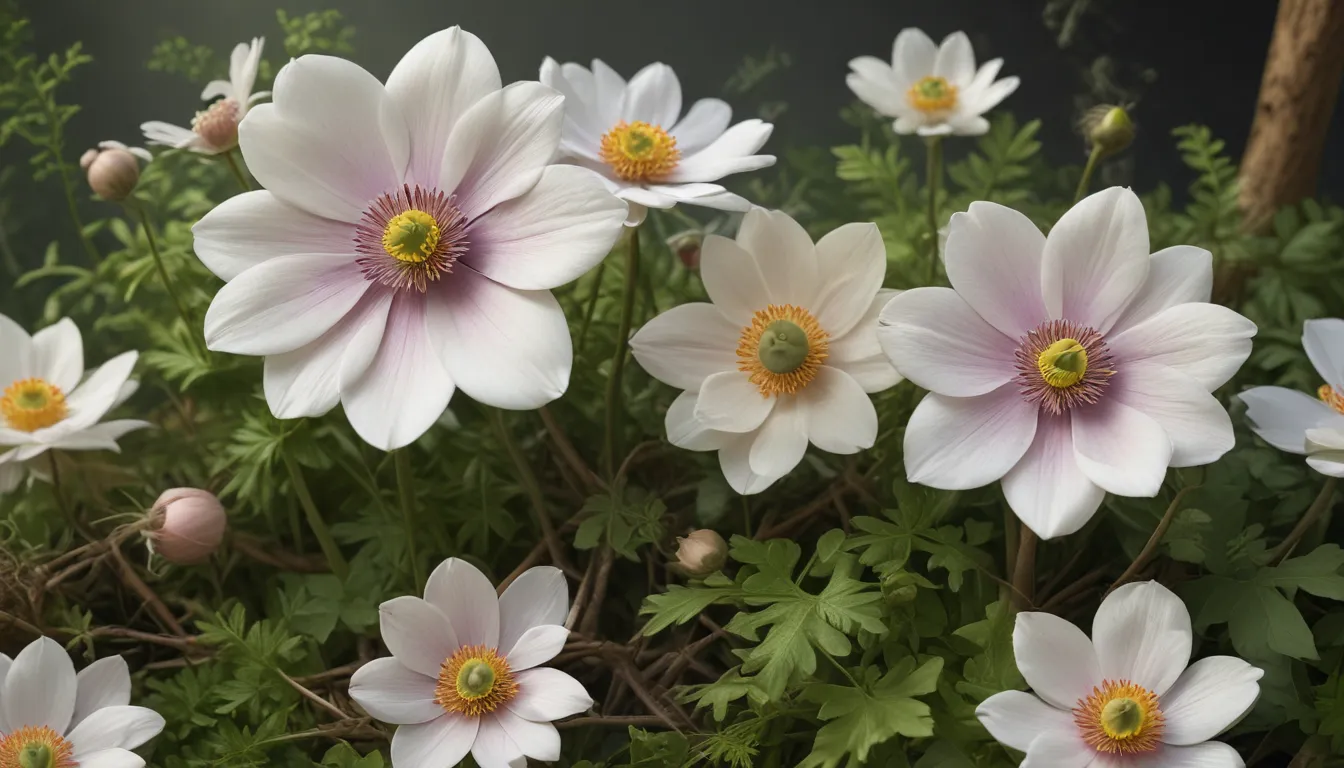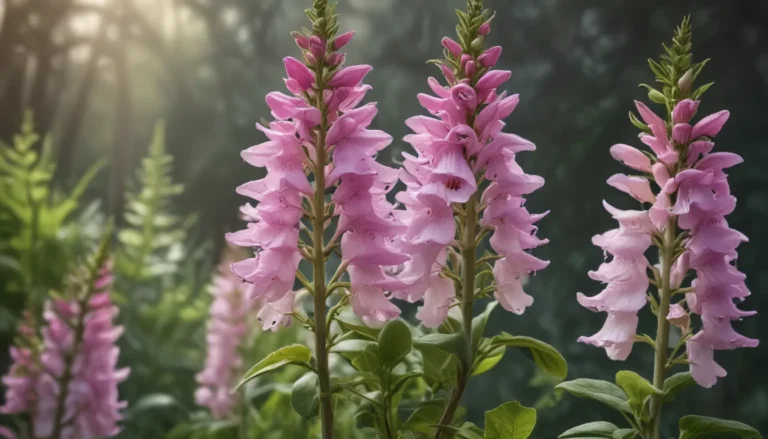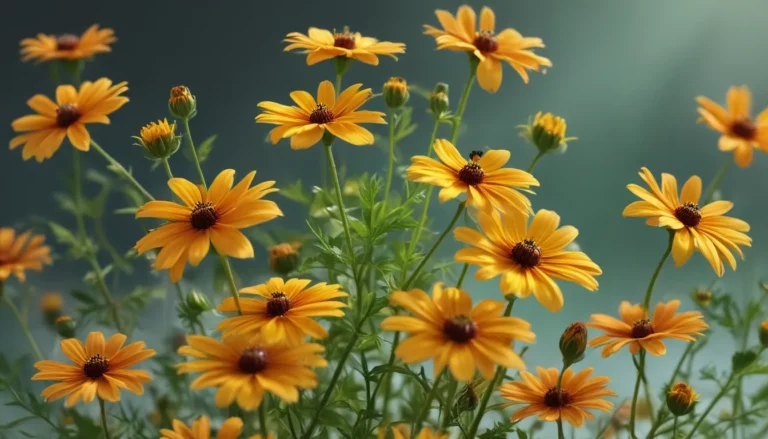The pictures we use in our articles might not show exactly what the words say. We choose these pictures to make you interested in reading more. The pictures work together with the words but don’t take their place. The words still tell you the important facts.
Are you curious about the mesmerizing Wood Anemone, scientifically known as Anemone nemorosa? This stunning perennial plant, belonging to the Ranunculaceae family, is native to Europe and is known for its delicate beauty that graces woodland areas with a carpet of white flowers during the spring season. But did you know that Wood Anemone has many more intriguing facts waiting to be uncovered? Join us as we explore 15 astounding facts about Wood Anemone that will leave you in awe of its remarkable characteristics.
The Delicate Spring Flower
Wood Anemone, also known as Windflower, is a delicate spring flower with star-shaped petals that symbolize hope and anticipation. Its elegant appearance attracts bees, butterflies, and other wildlife to gardens and natural areas, adding a touch of beauty to the surroundings. Native to Europe and North America, this charming flower is a favorite among gardeners for its ability to thrive in shaded, well-drained soil.
A Member of the Buttercup Family
Belonging to the Ranunculaceae family, which includes other well-known flowers like buttercups and columbines, Wood Anemone is part of a diverse group known for its beautiful and unique blooms. This family showcases a wide range of floral diversity that adds vibrancy to any natural setting.
Native Habitat and Blooming Season
Wood Anemone can be found in woodlands and shaded areas across Europe and North America. Its natural habitat includes forests, meadows, and gardens with moist, well-drained soil. This delicate flower blooms in early spring, heralding the end of winter and the beginning of a new season filled with growth and renewal.
Mythical Origins and Symbolism
The name "Anemone" stems from Greek mythology, where the flower was said to have been created by the tears of Aphrodite as she mourned the death of her lover, Adonis. Symbolizing anticipation in the language of flowers, Wood Anemone embodies hope and the promise of new beginnings.
Unique Characteristics of Wood Anemone
With its star-shaped flowers in white, pink, or purple hues, Wood Anemone adds a touch of elegance to any garden. The flowers' distinctive shape and colors create a visual spectacle that is sure to capture the attention of any observer.
Reproductive Strategy and Wildlife Interaction
Wood Anemone spreads through underground rhizomes, forming beautiful colonies that create a stunning carpet of flowers in woodlands. Its nectar-rich flowers attract bees and butterflies, serving as a vital food source for these pollinators and contributing to the biodiversity of the ecosystem.
Medicinal Uses and Herbal Remedies
Traditionally used in herbal medicine for its anti-inflammatory and pain-relieving properties, Wood Anemone has been employed to treat respiratory disorders and improve digestion. Its medicinal properties add to the plant's allure and highlight its importance in traditional healing practices.
Cultivation in Home Gardens
For gardeners looking to add a touch of elegance to their outdoor spaces, Wood Anemone is a popular choice. Thriving in shaded areas with well-drained soil, this charming flower can grace home gardens with its delicate beauty and graceful presence.
Wildlife Attraction and Biodiversity
In addition to attracting bees and butterflies, Wood Anemone also draws other wildlife such as birds and small mammals to its nectar-rich flowers and seeds. This interaction with wildlife adds to the beauty and biodiversity of natural areas where Wood Anemone grows.
Unique Foliage and Common Names
The deeply lobed leaves of Wood Anemone provide texture and interest to the plant, complementing its beautiful flowers. Known by various names such as Windflower, Thimbleweed, and Smell Fox, this versatile plant has captured the imagination of many with its enchanting presence.
Conservation Status and Protection
Due to habitat loss and over-collection, Wood Anemone is a protected species in some regions. It is essential to respect and preserve its natural habitat to ensure the long-term survival of this delicate and beautiful plant.
Conclusion: Unveiling the Wonders of Wood Anemone
Wood Anemone, with its delicate white flowers and unique characteristics, continues to captivate nature enthusiasts and botanists alike. From its adaptability to diverse habitats to its significant role in folklore and medicine, this woodland beauty is full of astonishing facts waiting to be discovered. Whether you are a plant lover or simply curious about the wonders of nature, exploring the enchanting world of Wood Anemone is sure to enlighten and engage you.
When you next venture into the woods on a springtime stroll, take a moment to appreciate the majesty of Wood Anemone. Let its beauty and the multitude of astonishing facts about this delicate flower remind you of the wonders that nature has to offer.
FAQs: Answering Your Burning Questions
-
Q: Where can Wood Anemone be found?
A: Wood Anemone can be found in various parts of the world, including Europe, North America, and Asia. It typically thrives in woodlands, meadows, and shady areas. -
Q: Are Wood Anemone flowers poisonous to humans?
A: No, Wood Anemone flowers are not toxic to humans. However, it's always best to avoid ingesting any plant material unless you are certain of its safety. -
Q: Do Wood Anemone flowers have any symbolic meanings?
A: Yes, Wood Anemone flowers symbolize anticipation and the arrival of spring. They are also associated with luck, protection, and warding off evil spirits. -
Q: Are Wood Anemone flowers beneficial to wildlife?
A: Yes, Wood Anemone flowers serve as an important food source for various insects, including bees and butterflies. They also provide shelter and nesting sites for small mammals. -
Q: Can Wood Anemone be cultivated in gardens?
A: Yes, Wood Anemone can be cultivated in gardens, especially in shaded areas with well-draining soil. Choosing native varieties can increase the chances of success.
If you enjoyed learning about Wood Anemone, why not explore more captivating flora? Discover the charm of Brunnera, a plant that adds a splash of color to any garden. Dive into the world of flowers and uncover their secrets with our fascinating Flower Facts. Take a stroll through temperate woodlands and shrublands to learn about the unique ecosystems they support. From delicate blooms to sprawling landscapes, the realm of plants offers endless wonders to explore.
Trusted Content for Curious Minds
Our commitment to providing trustworthy and engaging content lies at the core of what we do. Each fact on our site is contributed by real users like you, bringing a wealth of diverse insights and information. Our dedicated editors meticulously review each submission to ensure the highest standards of accuracy and reliability. Trust in our dedication to quality and authenticity as you delve into the captivating world of Wood Anemone and beyond.






